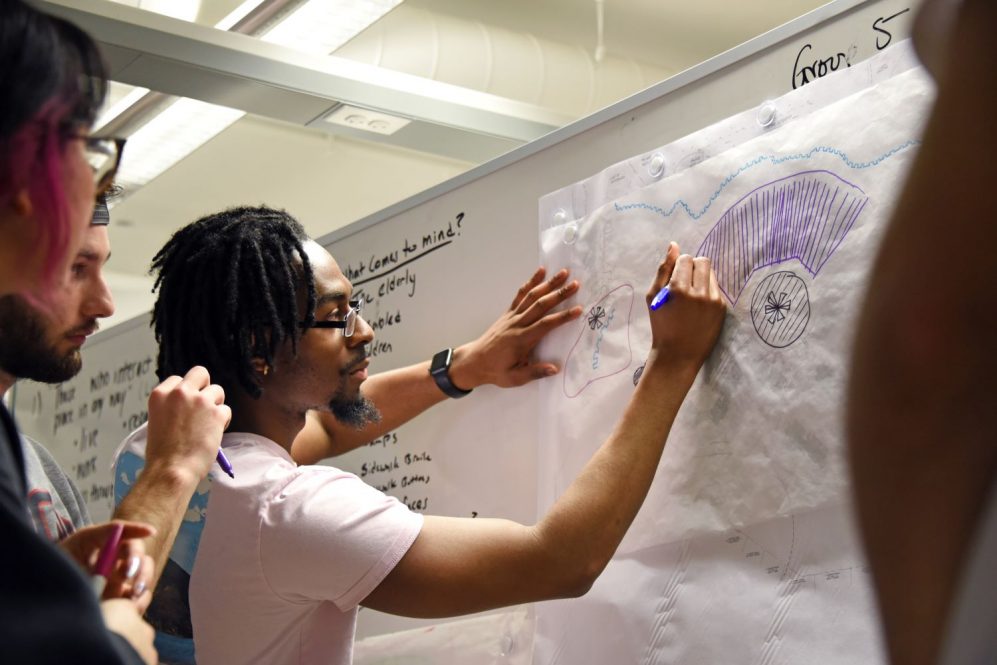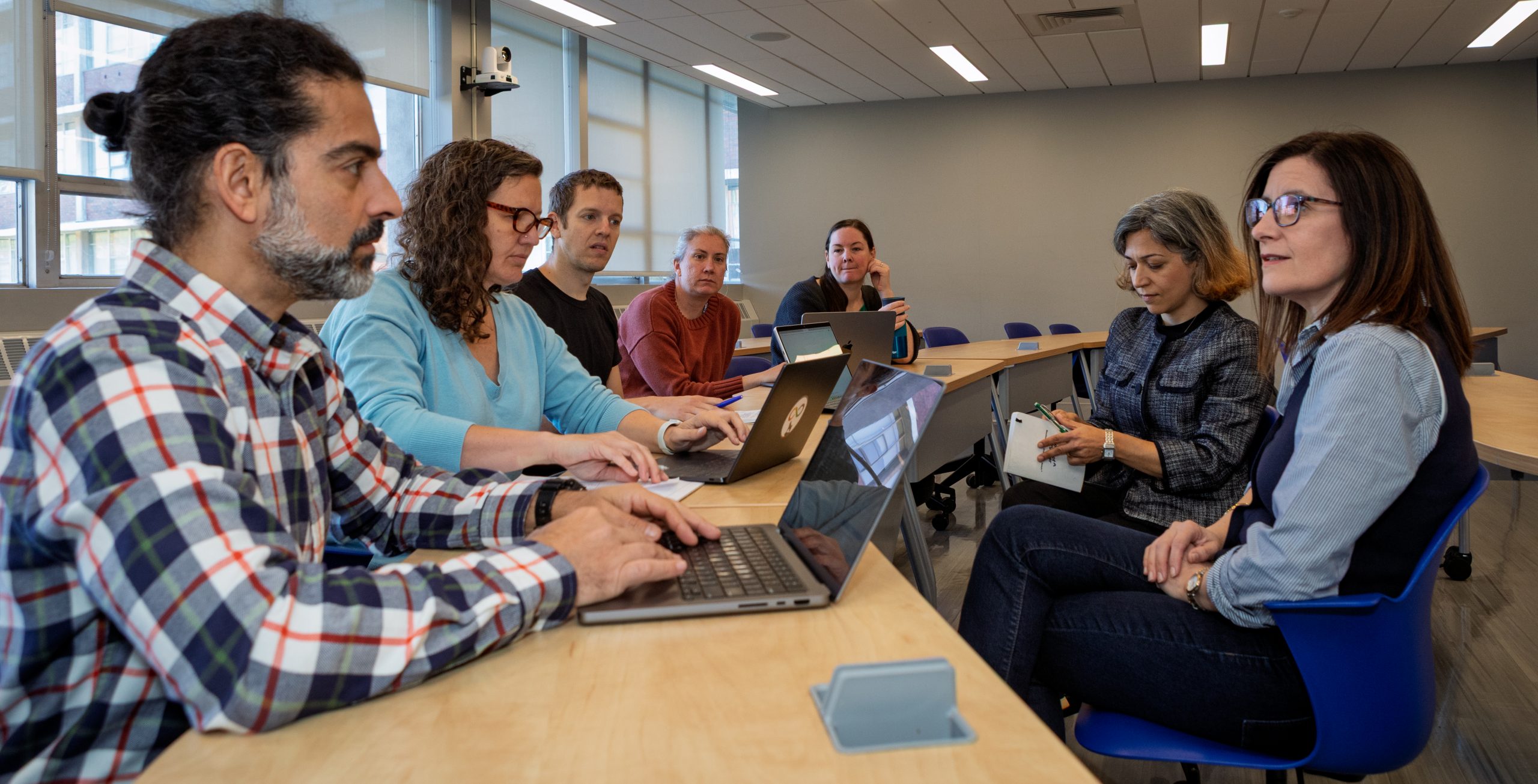Professors in the landscape architecture program in the College of Agriculture, Health and Natural Resources (CAHNR) have implemented a teaching model that emphasizes collaboration between students.
This initiative is spearheaded by Assistant Professors Mariana Fragomeni and Julia Smachylo in the Department of Plant Science and Landscape Architecture.
The approach, called a vertical teaching model, is not new to the world of architecture, but it had not been implemented in UConn’s program before.
While a traditional approach to studio education has cohorts working on separate projects, a vertical studio model enables collaboration between students at various stages in their educational career to work side by side. This mimics the environment of professional designers who work across disciplines and experience levels where they can help and learn from one another.
“I think the value of incorporating the vertical studio is that constant reminder to students that what they’ve learned in the previous class isn’t forgotten, it’s added,” Fragomeni says.
While there are many benefits to the traditional vertical studio model, it poses challenges as well. It relies heavily on upperclassmen having developed the skills they need to teach the undergraduates and doesn’t work well for all learning styles.
“From a pedagogical standpoint, there’s a lot of pros and cons to teaching the vertical studio,” Fragomeni says.
To get the best of both worlds, Fragomeni and Smachylo devised a hybrid model. In their version of the vertical teaching model, upper- and underclassmen work on the same project but on different stages of it. Smachylo’s studio for sophomores collaborates with Fragomeni’s junior-class studio on service-learning projects. They first implemented this model in the spring 2023 semester.
In Smachylo’s studio, the underclassmen meet with the client and complete a site analysis, the first step of any landscape architectural project. They assess the physical, biological, and cultural elements of the site using UConn facilities such as the soil testing laboratory and the plant diagnostics lab. This takes full advantage of their colleagues in UConn’s plant science program and UConn Extension, unique aspects that aren’t always available at other universities.
The sophomores then present their findings to the juniors who take up the baton and develop a proposal to share with the client.
The two groups spend a week together collaborating. During this stage, the juniors can ask the sophomores questions about their site analysis and brainstorm together.
“The sophomores start to get a glimpse of how what they’re doing fits in the bigger picture of the design process,” Fragomeni says. “And then for the juniors it’s a reminder of the importance of the site analysis in the conceptualization of their design.”
The students worked on two projects in fall 2023. The first was developing a plan for the New Horizons neighborhood in Farmington, Connecticut. New Horizons is a non-profit community specifically designed for people with physical disabilities. This partnership also led to a service-learning project for this semester with their sister institution Cherry Brook Health Care Center.
“It’s a great opportunity for us to immerse our students in a real project,” Fragomeni says.
In the second project from last year, students worked with the Mansfield Downtown Partnership looking at climate and design in public spaces. Specifically, students were tasked with addressing heat mitigation in downtown Storrs as intense heat is becoming more common and windstorms threaten the natural shade cover provided by trees.
“The Partnership had some need to understand how that space was being used, and there were some issues with heat and wind,” Smachylo. “They really wanted our students to combine both site analysis and create a proposal for how to address adverse climate conditions.”
This model also fosters interpersonal connections between students at different academic levels.
“Informal spaces are really productive spaces,” Smachylo says.
Smachylo and Fragomeni have given presentations about their experience teaching with this model at national conferences.
“This way of working is generating excitement in the classroom,” Smachylo says. “I can see connections being made and the development of a design studio culture that was lost during remote teaching during Covid.”
Fragomeni and Smachylo say they look forward to continuing to adapt their teaching model with each new semester and each new project. The use of the vertical studio approach continues this semester with two additional service-learning projects that address accessibility and historic and agricultural conservation.
“We are new, and we come with the benefit of that energy. Our profession has vastly changed,” Fragomeni says. “It’s really a timely moment for the program to expand and explore.”
This work relates to CAHNR’s Strategic Vision area focused on Fostering Sustainable Landscapes at the Urban-Rural Interface.
Follow UConn CAHNR on social media



